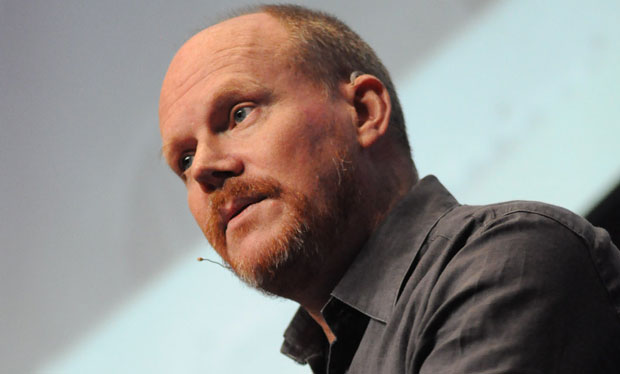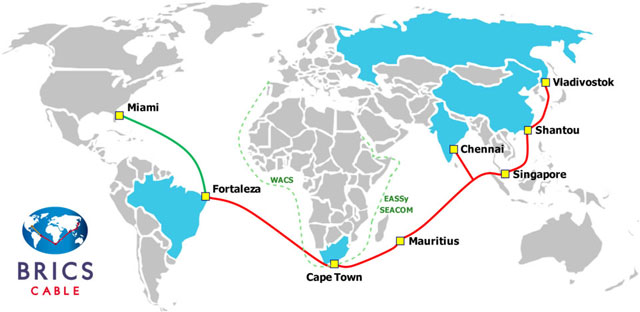
Just when telecommunications industry players and analysts thought SA couldn’t possibly get any more undersea broadband infrastructure, news is emerging of a raft of new cable systems that will serve both SA and the region.
On Monday, Brazil, Russia, India, China and SA — the so-called Brics countries — announced plans for a new high-capacity, 34 000km submarine cable system that will extend from Vladivostok in the east of Russia, through China and Singapore to India and on to SA and across the Atlantic to Brazil and then up to the US.
The Brics Cable, if it goes ahead, means there are now four projects underway to build high-capacity systems in the South Atlantic between Africa and South America. The others are:
– The SA-led SAex project to link SA and Angola with Fortaleza in Brazil with a 12,8Tbit/s system.
– The Wasace cable which is being managed by the David Ross Group of the US and which will provide links across the North Atlantic and the South Atlantic.
– A project by Brazil’s state-owned telecoms company Telebrás to build a 6 000km system linking the South American nation with Luanda in Angola.
If the Brics cable project goes ahead, it will be the third longest telecommunications cable system in the world.
Steve Song, author of the popular African Undersea Cables map, believes a new cable system linking SA with Asia makes sense as the existing and relatively low-capacity Safe cable is the only system serving this route. However, he doesn’t believe four cables spanning the South Atlantic makes any sense at all.
“I would find it very surprising if all four of these cables succeeded,” Song says. “If I was the Brics Cable, I’d try to partner with someone on the leg to Brazil.”

Lawrence Mulaudzi, shareholder in the SAex project, seems to concur with Song’s assessment of the Brazil-Africa leg.
Mulaudzi says SAex is at an “advanced stage of planning” and that “there is no need for more systems linking SA and Latin America”.
“It doesn’t make business sense to put two cables on that route. Even the [Industrial Development Corporation] has conducted its own studies on our behalf. It concluded that a cable system between SA and Brazil is viable, but only for one system.”
The transatlantic route is seen as important to SA as it will provide a shorter route to the US and therefore reduce the network latency issues associated with switching traffic through London and across the North Atlantic to data centres in the US.
The Brics Cable is scheduled to go live by mid-2014, according to a proposed timeline published on its website. It hopes to sign a supply contract within the next six months, after which building and commissioning will begin.
The cable, which is being driven in SA by former Broadband Infraco chairman Andrew Mthembu, will interconnect with the 5,1Tbit/s West African Cable System along Africa’s east coast and the Eassy and Seacom cables along the continent’s eastern shoreline.
Mthembu, who chairs Brics Cable backers i3 Africa (an SA fibre-to-the-home start-up that is running a proof of concept in Durban) and Imphandze Investment, could not immediately be reached on his mobile phone for comment.
The Brics Cable, if it comes to fruition, will offer 12,8Tbit/s of design capacity using two fibre pairs. This is the same capacity as the planned SAex cable between Africa and Brazil.
Few details are available about the planned Telebrás cable. — (c) 2012 NewsCentral Media




